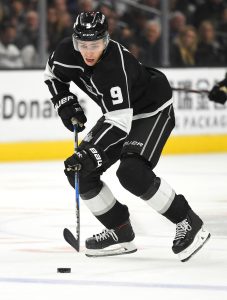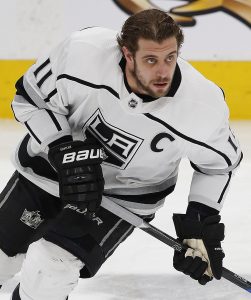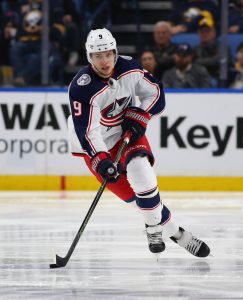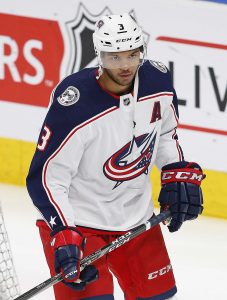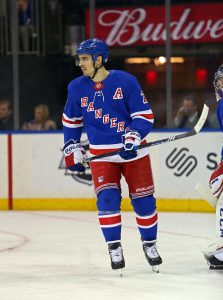Before July 1st, few people outside of the Toronto Maple Leafs front office were too concerned about the contract status of defenseman Jake Gardiner, who enters the final year of his current deal in 2018-19. Then Drew Doughty, Oliver Ekman-Larsson, Ryan McDonagh, and Ryan Ellis all preemptively signed long, expensive extensions. Just like that, the situation for Gardiner changed completely.
Looking ahead to next summer, there is now an argument to be made that Gardiner is the second-best defenseman on the unrestricted free agent market as it currently stands. That was far from true earlier this summer. He has gone from an afterthought to an Erik Karlsson consolation prize. While the free agent class features many prominent veteran defenders – Jay Bouwmeester, Anton Stralman, Marc Methot, and Alexander Edler – it lacks many long-term pieces behind Karlsson and Gardiner. The Winnipeg Jets’ Tyler Myers and the Vegas Golden Knights’ Nate Schmidt would perhaps offer Gardiner some competition, if either unexpectedly reaches the market, but there is a strong case to be made that Gardiner would be the superior target.
The real question is whether or not Gardiner actually makes it to free agency. While nothing has changed about Gardiner’s value or ability since July 1st, his relative cost has shifted dramatically. With a potentially loaded free agent market for defensemen, Gardiner would have been taking a risk by turning down a fair extension from the Leafs to pursue other offers that may not have come once the smoke cleared from the major signings. Now that he almost certainly will be considered one of the top available names, Toronto may have to pay a premium to keep him from testing the waters, if they can. By the time Gardiner finishes next season, his career games played and offensive production will likely be superior to those currently of a player like McDonagh, who just signed a seven-year extension worth $6.75MM AAV. Granted, Gardiner is not the all-around player that McDonagh is, but given his continuously improving play and the boost of being a top available younger player, it is a fair frame of reference. For example, look at the four-year, $18.2MM contract that Calvin de Haan – considered by many to be the best defenseman in this current free agent class – signed with the Carolina Hurricanes this summer despite missing the majority of last season due to injury. The market sets the price and scarcity drives up price.
So will Toronto ante up to keep Gardiner? The Maple Leafs have to be careful with their long-term salary cap management. The team still owes William Nylander a contract this summer, as well as extensions for Auston Matthews and Mitch Marner by next off-season. Those are the three names that everyone is focused on when it comes to Toronto. Yet, in addition to Gardiner, other impending free agents that the Leafs would like to keep include forwards Kasperi Kapanen, Andreas Johnsson, and Josh Leivo, defensemen Travis Dermott, Andreas Borgman, and Connor Carrick, goaltender Garret Sparks, and even incoming imports Par Lindholm and Igor Ozhiganov who could win spots on the team this season. This is the final year that Toronto can take advantage of this massive group of bargain players, all of whom are paid $1.3MM or less and due raises. Not to mention, signing Gardiner and the other blue liners and losing veteran Ron Hainsey will still keep a massive hole open on the right side of the defense that the team will need to continue to search to fill.
The numbers simply don’t seem to add up, at least not very neatly. It would seem difficult for the Maple Leafs to pay Gardiner his market value, extend all of their other key impending free agents, fill the gap on the right side of the top pair next to Morgan Rielly, and still somehow end up under the salary cap next season. The story line to watch this season, as the John Tavares era begins, is whether the Jake Gardiner era is ending. Another career year for the capable defenseman could leave the Leafs without much choice but to let him walk next off-season and continue to work with a pieced together blue line. Do they trade him at the deadline? Do they trade a young core forward to replace him? Or instead do they somehow move salary to fit Gardiner in at any cost? Find out in 2018-19.
